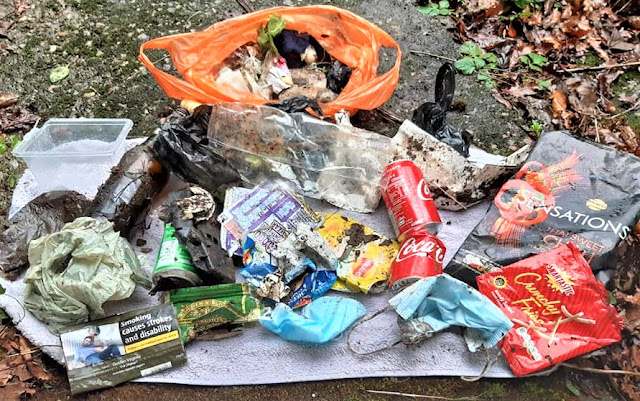Six weeks ago Sea Champion Ben set off from Glasgow, taking his first steps in a 7000 mile journey to explore the British coastline on foot.
Raising money for the Marine Conservation Society and the John Muir Trust as he goes, Ben has set out to give back by undertaking citizen science and voluntary work on his "long wiggle" round.
By the time I reach
Fort William I will have covered more than six hundred miles (about 1000km) on
foot and by kayak.
The ratio of the
two seems to be about 3:1 so far. For every mile I have paddled, I have walked
about three.
Over the course of
six weeks I feel I've been doing fairly well overall.
What with averaging
about a hundred miles each week, and around fifteen miles each day, carrying
this rucksack that doesn't seem to get any lighter, whilst picking up litter
and carrying it about until I come across a bin that's usually already full, or
in some cases, just dragging it way above the high tide line into a wind-proof
pile; it has all left me wanting some proper rest.
Luckily, however,
Oban seems to be overflowing with lovely people who were willing to look after
me, put up with me, spend time with me, and feed me well, despite my ramblings
and serious lack of hygiene.
Unluckily, however,
I simultaneously had caught a cold of some sort from somewhere.
So I've spent most of the last few days in and around Oban in a state of weary bleary confusion.
Sometimes I wake up
and wonder where on earth I am. Thankfully though, I'm usually inside the tent,
and it doesn't take me long to figure it out.
The kayak, for
which I have no name for yet, it is simply, the kayak, has been the star of the
journey so far.
It has enabled me
to learn so much more about the coast then I would have done through walking.
I've also learned more about the interplay between wind and water, as well as wind, water and rock.
The differences in
wave types, directions, velocities, frequencies, depths, pitches, angles,
colours and overall levels of scariness, are beyond calculation.
There was a day about a week ago where I was paddling from the bottom of the Ardfern peninsula towards Loch Melfort, along the Sound of Jura.
The tide was
incoming, the wind was a westerly (so mainly on my left) and the waves had many
miles of gathering space to develop into undulations of several feet or so
between crest and trough. But the wind wasn't too strong so as to create white
caps and sharp edges that could break over me or topple me underwards.
They tended to roll
excitedly, under and around me.
Then they would
bounce off the hard steep rocks of the peninsula, and start coming at me from all
directions.
The result of
paddling in this for about four hours, became apparent when I had packed up and
started walking.
I was following the
main road at this point, and quickly realised that I was swaying quite
uncontrollably, and visibly, whilst trying to walk in a straight line. This led
me to having huge fits of laughter, which made me sway a lot more, all while I
was attempting to avoid the incoming traffic.
It was the most fun I've had in a while.









